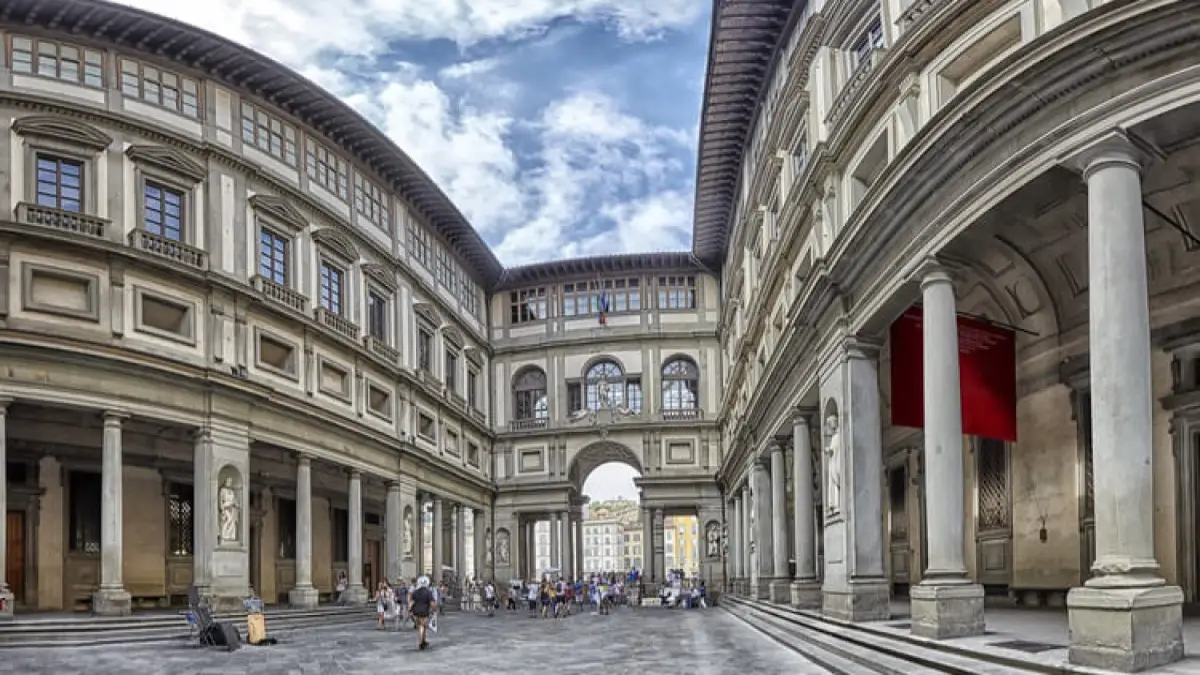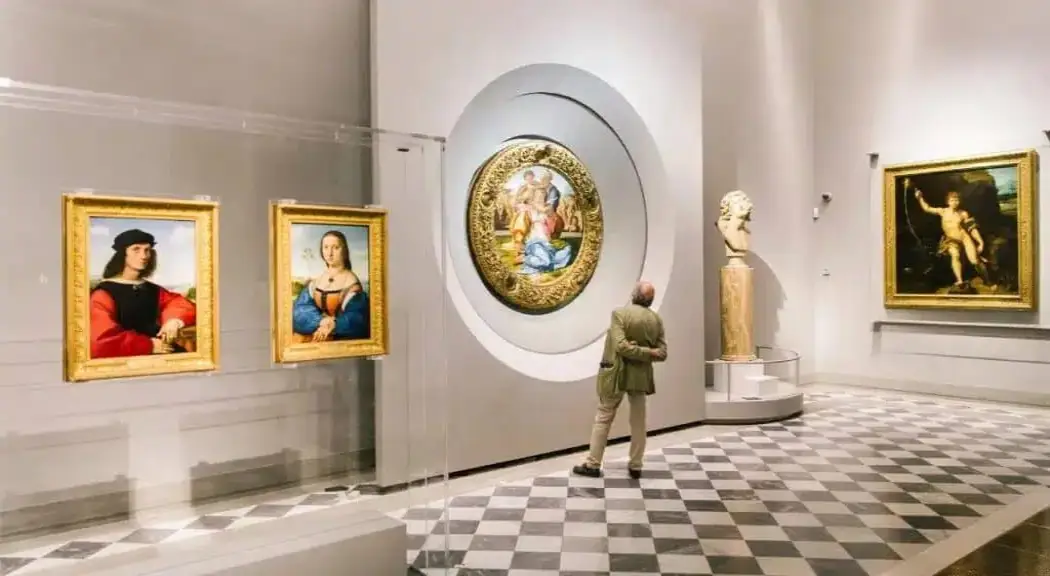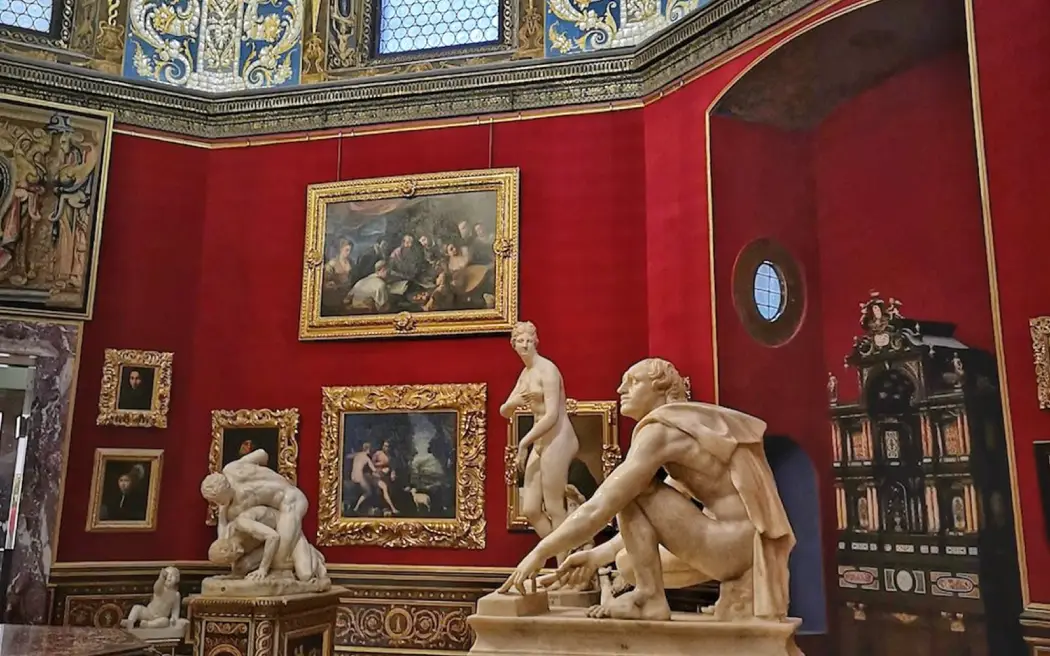The History behind the Uffizi Gallery
From Medici Offices to Renaissance Masterpiece

Planning a trip to Florence and wondering what makes the Uffizi Gallery so special? You’ve come to the right place.
This article walks you through the fascinating history of the Uffizi—from its beginnings as government offices under the powerful Medici family to its transformation into one of the most iconic art museums in the world.
If you’re a history buff, an art lover, or just curious about what to see, we’ve broken it all down for you—step by step.
The Uffizi Gallery attracts over 3 million visitors annually, so booking in advance is a smart move. The Skip-the-Line ticket is the most popular and budget-friendly option. The Guided Tour ticket includes expert insights, while the Small Group Tour offers a more personal experience with fewer people.
History timeline of the Uffizi Gallery
Below is a chronological timeline tracing the transformation of the Uffizi Gallery—from a Medici office complex to one of the most iconic art museums in the world:
1560 – Commission by Cosimo I de’ Medici
Cosimo I orders architect Giorgio Vasari to build the Uffizi, designed to centralize Florence’s government offices.
1565 – Vasari Corridor Constructed
The elevated Vasari Corridor is built to connect Palazzo Vecchio with the Pitti Palace, crossing over the Ponte Vecchio.
1574 – Vasari’s Death & Continuation
After Vasari dies, the project is completed by Alfonso Parigi and Bernardo Buontalenti.
1581 – First Gallery Space Created
Francesco I de’ Medici converts the top floor of the Uffizi into a private gallery for the family’s art collection.
1584 – The Tribuna Room
The iconic Tribuna is constructed to display the Medici’s most prized artworks.
1737 – Family Pact Preserves the Collection
Anna Maria Luisa de’ Medici ensures the Medici art collection remains in Florence forever.
1769 – Uffizi Opens to the Public
The gallery becomes one of Europe’s first public museums under Grand Duke Leopold II.
1779 – The Niobe Room Added
A new hall is created to display classical sculpture inspired by mythology.
1849 – Declared a National Museum
Following Italian unification, the Uffizi becomes a national museum.
1940s – WWII Bombings
Artworks are evacuated; structural damage occurs, but the collection is preserved.
1993 – Mafia Bombing
A terrorist car bombing causes fatalities and damages parts of the Uffizi; restoration follows.
1989 to Present – Nuovi Uffizi Renovation
A major modernization effort begins, focusing on layout, climate control, and display lighting.
2006 – Expansion Efforts
The museum doubles in size, adding modern amenities and more gallery space.
2020 – Pandemic Closure
The museum closes for 150 days during COVID-19, then reopens with safety upgrades.
2021 – Focus on Inclusion
14 new rooms open, highlighting diverse and often-overlooked artists.
2024 – Vasari Corridor Reopens
The famous Vasari Corridor reopens to visitors, offering elevated views of Florence and access to rare artworks.
Medici origins: A power move in Florence’s political heart
The story begins in 1560, when Cosimo I de’ Medici, Duke of Florence, commissioned Giorgio Vasari to build an office complex—uffizi means “offices” in Italian—to house Florence’s magistrates and administrative bodies. The building’s elegant U-shape along the river created a dramatic urban corridor still admired today.
In 1565, Vasari added the now-iconic Vasari Corridor, an enclosed passageway that stretches from Palazzo Vecchio to Pitti Palace, passing above the bustling Ponte Vecchio. This allowed the Medici family to move freely and securely between their residence and the government seat.
Birth of a renaissance gallery

After Vasari’s death, architects Alfonso Parigi and Bernardo Buontalenti completed the project. But it was Francesco I de’ Medici who transformed the top floor into a private art gallery in 1581. This space eventually became home to priceless Roman statues and Renaissance paintings.
One of the most iconic parts of the museum, the Tribuna Room, was added in 1584 to house the Medici’s most valuable pieces. Its ornate design and octagonal shape became a symbol of Renaissance elegance and collecting.
Uffizi becomes public
Thanks to the Family Pact signed by Anna Maria Luisa de’ Medici, the Medici’s artworks remained in Florence even after their dynasty ended. In 1769, the Uffizi Gallery officially opened to the public under Grand Duke Leopold II, making it one of the earliest modern museums in Europe.
From this point on, the Uffizi evolved into more than a family treasure trove—it became a destination for scholars, tourists, and lovers of Renaissance art visiting Florence, Italy.
Growth in the 19th and 20th centuries

In 1849, after Italy’s unification, the Uffizi Gallery became a national museum. Famous artworks such as Botticelli’s The Birth of Venus and da Vinci’s Annunciation were added to the collection, boosting the museum’s global reputation.
Although World War II and a tragic 1993 Mafia bombing caused serious damage, restoration efforts preserved the gallery’s legacy. The gallery continued to grow, modernizing security, lighting, and exhibit spaces through the Nuovi Uffizi project launched in 1989.
Uffizi in the 21st century
In recent years, the Uffizi has focused on expanding access and inclusivity. Major renovations in 2006 and 2021 added dozens of new rooms, improved lighting, and introduced forgotten works by lesser-known artists, especially female painters of the Renaissance.
In 2024, the long-closed Vasari Corridor reopened to visitors, offering an unforgettable walking experience over Florence’s rooftops. Today, the gallery features more than 13,000 square meters of exhibition space across 101 rooms.
Why visit the Uffizi Gallery in Florence?
The Uffizi Gallery isn’t just an art museum—it’s a window into the soul of Florence. From its Medici roots to its role as a beacon of Renaissance culture, the gallery tells the story of how art, power, and beauty shaped one of Europe’s greatest cities.
If you’re planning a trip to Florence, the Uffizi Gallery is a must-visit. Explore the masterpieces, walk the Vasari Corridor, and take in centuries of history in one unforgettable location.
